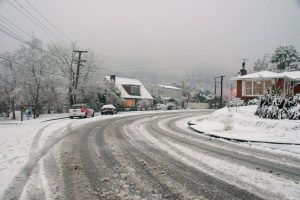 Snow is one of the most exciting weather events that can occur during the winter months. The extreme weather version of a few flakes of snow is a snowstorm, called a blizzard. Northern regions of America, Europe, and Asia have learned to live with extreme snow conditions during the winter months. It often places not used to such condition that are worse affected. in general New Zealand, South Island is one part of the country caught out by unexpected snow storms, largely because they are so rare.
Snow is one of the most exciting weather events that can occur during the winter months. The extreme weather version of a few flakes of snow is a snowstorm, called a blizzard. Northern regions of America, Europe, and Asia have learned to live with extreme snow conditions during the winter months. It often places not used to such condition that are worse affected. in general New Zealand, South Island is one part of the country caught out by unexpected snow storms, largely because they are so rare.
In blizzard conditions, heavy snowfall is accompanied by strong winds and visibility is often near zero, known as a ‘whiteout.’ The winds can blow snow across land creating large snow-drifts capable of blocking roads and completely covering trains and cars, trapping people inside. Communications and transport can be severely affected in both cities and the countryside.
Did you know…
 The worst snowstorm disaster was on the East Coast of North America from March 12th – 13th 1993. This storm has been called ‘The Storm of the Century’ with 40 inches of snow falling in New York State and 60 inches in the Mountains along the Tennessee/North Carolina border. Winds of 70 miles per hour were frequent throughout the affected area with snow drifts up to 20 feet high. 500 people lost their lives due to the severity of the storm and the large area affected. Damage costs reached $1.2 billion.
The worst snowstorm disaster was on the East Coast of North America from March 12th – 13th 1993. This storm has been called ‘The Storm of the Century’ with 40 inches of snow falling in New York State and 60 inches in the Mountains along the Tennessee/North Carolina border. Winds of 70 miles per hour were frequent throughout the affected area with snow drifts up to 20 feet high. 500 people lost their lives due to the severity of the storm and the large area affected. Damage costs reached $1.2 billion.
Ice Storms
We have all experienced an icy morning when windscreens need defrosting and road surfaces can have icy patches. Freezing rain, however, can create some very different hazardous conditions. If snowflakes melt as they fall, but do not have the time to refreeze, they will freeze to whatever surface they hit as long as it is cold enough.
Ice storms are a result of heavy freezing rain and usually occur with big winter storms and big temperature changes. Everything is covered with a layer of ice, up to 5 centimeters thick. Even thin ice can be heavy and tree branches, power lines, and electricity pylons are frequently damaged.
From 5th-9th January 1998, the Canadian city of Montreal suffered from Canada’s worst weather disaster. At ground level, the air was just below freezing, but the jet stream brought moisture over the top, which created rain. This ice storm brought down 80,000 miles of power lines across Quebec, while 15,000 people were housed in shelters in Montreal. This ice storm is on record as being the most devastating in history. Airports and highways were closed, 3 million people were without power and the total insurance costs reached US$650 million.